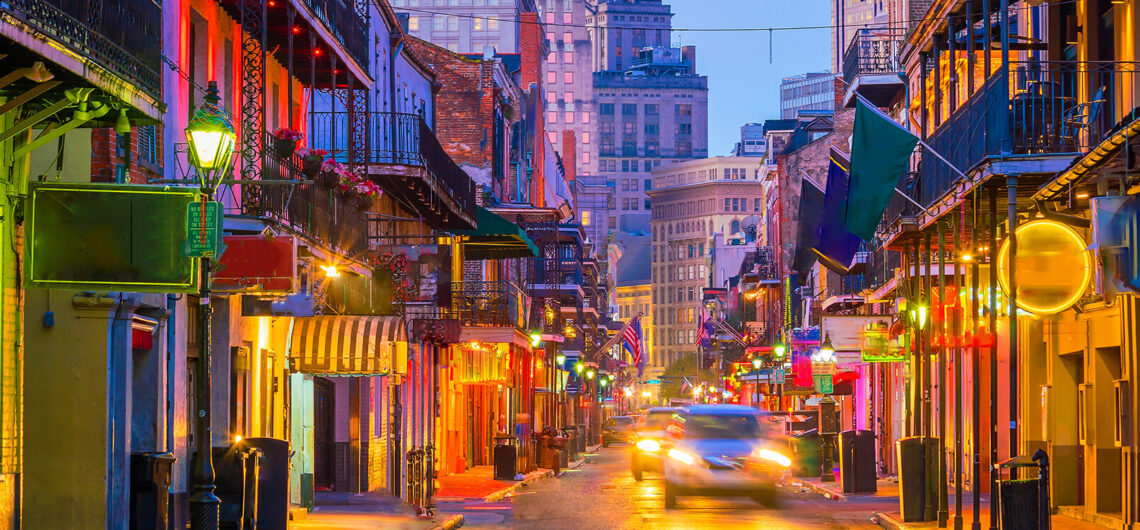When you think of “global influence,” you might envision large metropolises with residents from all over the world. We’ve all been there – New York City, Los Angeles, Chicago, Houston – and we’ve all probably been disappointed in at least one of them. We go expecting to be immersed into culture only to find ourselves surrounded by tourist traps. Now, I’m not saying these destinations aren’t amazing in their own right (I’ve even lived in one of them), but I do know that feeling of searching for authenticity in a city full of cultures and not being able to find it.
So, when I say, “global influence,” what I’m referring to are unique destinations that, for one reason or another, have be influenced by another place in a separate part of the world, and when you visit, you feel as though you’ve been transported.
Here are seven of these special places:

The French Quarter, New Orleans, Louisiana
Founded by the French in 1718, the French Quarter is known as “The Crown Jewel of New Orleans” and rightly so. As the oldest and one of the most historic neighborhoods in in the city, its history traces back to Europe and beyond. But it’s the French influence in particular that encompasses every aspect of the neighborhood. From the architecture and art to the food and music, and even its livelihood, The French Quarter embodies the French way of life – enjoying life’s best moments with a little extra “pizazz.”
Little Haiti, Miami, Florida
Little Haiti in Miami is a cultural icon known for its global restaurants and fruit stands, flourishing art galleries and colorful street murals, as well as its inventive music scene and thriving theaters. Its Victorian architecture found in parts of the Caribbean boasts high-pitched roofs and picturesque pastel colors bringing an added element of joy to the already lively neighborhood. Little Haiti is the heart and soul of Miami’s Haitian community, and it has made huge contributions to the vibrant and diverse culture of Miami as a whole.

Chinatown, San Francisco, California
Although many large cities have their own Chinatowns, San Francisco’s Chinatown is the oldest, and perhaps the largest, Chinatown in America. Back in the 1850s, many Chinese immigrants made their way to America’s west coast and settled in the Bay Area. Most of the immigrants worked blue collar jobs which made it difficult to fully integrate into American society, but as their population grew, so did their neighborhoods and their influence. To this day, the first Chinatown in the U.S. is still alive and well with Chinese-owned restaurants, shops, and other businesses that are now a historic yet still thriving landmark.
“Little Ethiopia,” Silver Spring, Maryland
The city of Silver Spring, Maryland is home to an unofficial “Little Ethiopia.” The town is known for its East African influences and has done an exceptional job at keeping the traditions of Ethiopia alive. From delectable Ethiopian eateries to Ethiopian coffee shops to the annual Ethiopian Festival, Silver Spring is a shining example of cultural celebration. Not to mention, Montgomery County, home to Silver Spring, is the first jurisdiction in the U.S. to name September African Heritage Month.

Market Square, San Antonio, Texas
Back in the 1890s, San Antonio’s market moved from its original location, Plaza de Armas, to its current location to make room for an influx of settlers. To this day, the city’s Historic Market Square still thrives on a plaza that was originally gifted to the city’s settlers by the King of Spain in 1730. The energy of the market was lost during World War II, but by 1976, it had regained its color and vibrancy. Today, the market is a destination for both visitors and locals alike, hosting authentic Mexican cuisine, local retailers selling their quality Mexican artifacts and handicrafts, and activities celebrating Día de los Muertos, Cinco de Mayo, and other Mexican festivities.
Dearborn, Michigan
Unknown to most, Dearborn, Michigan is home to one of the largest Arab American communities in the U.S. with over 60% of the community’s population being of Arab descent. Dearborn attracted Arab immigrants in the 1920s when auto industry jobs drew workers from many Arab countries. The immigrants built a thriving community in Dearborn with restaurants that attracted visitors. As one could imagine, the lives of the Dearborn residents became extraordinarily hard after 9/11, so they came together and raised funds for a special project to help combat the growing prejudice against their people: the Arab American National Museum. The beautiful museum is one of the best places to learn about Arab culture in the U.S., and it even offers food tours of the surrounding area.

Santa Fe Plaza, Santa Fe, New Mexico
Although Native American culture is indigenous to the U.S., it still deserves to be recognized regarding its global influence. The entire city of Santa Fe, New Mexico boasts Pueblo-style architecture, a mix of Native American and Spanish cuisine, and endless Native American pottery, jewelry, and art collections, but the downtown Santa Fe Plaza is where you’ll see the Native American culture come to life. On any given day, you might witness ceremonial dancing and chanting in the streets, and on weekends, local Native American artisans will line the Plaza with their handmade goods. Santa Fe is a national icon that’s unlike any other city in America, and every day here feels like a cultural celebration.

Comments